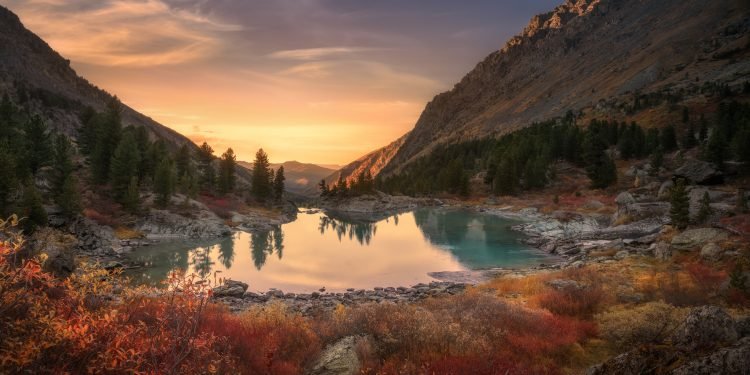Take your pictures when the light is right.
While a camera’s automatic light-metering systems are capable of adjusting for different levels of light, most photographers prefer to adjust their own exposure settings in order to achieve the desired effect. An abundance of contrast can create harsh shadows and blown-out highlights, which may be acceptable in some situations, but most photographers prefer their photos to have less contrast and more even lighting. If you are shooting outdoors on a sunny day, your best bet is to wait until early morning or late afternoon when the sun isn’t so strong. If it is overcast outside, you can still take photos at any time since clouds filter out sunlight, creating soft even light that isn’t too bright or dark.
Tripod is Your Friend
A tripod is invaluable to landscape photographers because it allows you to fire off sharp shots without a camera shake. This is crucial when you need to slow down the shutter speed to blur water, clouds and other natural elements. A sturdy, lightweight tripod will allow you to lug your gear everywhere without wearing yourself out. If you don`t have your own you can rent it from a photography studio.
Choose an appropriate horizon line.
Some beginners simply point the camera at the part of the scene that inspires them the most. While there’s certainly nothing wrong with photographing what inspires you, try making your composition a little more deliberate. Rather than just shooting, consider how to place the horizon in the frame. If it’s best to have it on the upper third, then do so. If it’s better to have it on the lower third, then do that instead. Also, consider what is most interesting about your subject: if it’s the landscape, try putting the horizon in the upper third. If it’s best to capture more of the sky in your shot, then place your horizon on the lower third instead.
Add a Filter
When shooting landscapes, don’t shoot without a lens filter. Lens filters are cheap accessories that make a big difference in your landscape photos. A polarizing filter will allow you to control how blue the sky looks; a graduated neutral density filter will prevent you from overexposing the sky, keeping all the details intact instead of blowing out a beautiful sky to a white blob; and regular neutral density filters will allow you to take long exposures without overexposing images, even during the day.
Shoot RAW
Switching to RAW format is a simple change inside the image quality options in your camera menu. However simple, it makes a big difference. The RAW format contains more data than the JPEG format, allowing you to make adjustments to your photo that would normally be impossible with JPEGs. The RAW editor allows you to use graduated filters or brush adjustments over jus
